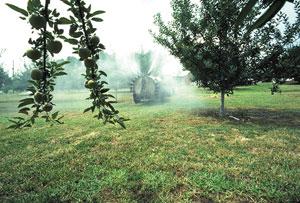Label Review Training: Module 1: Label Basics, Page 3
Section 1: What is a pesticide label?
Label Versus Labeling
A pesticide label includes any text or images printed directly on, or attached to, the product or its packaging. Labeling, on the other hand, includes the label, as well as any printed or written material that accompanies the product–for example, a booklet. Labeling can also include material to which the label (or other labeling material) refers. For example, if a label refers to a manual on how to conduct a procedure, that manual is also labeling that the user must follow and EPA must approve it.
Pesticide Products
A pesticide is defined in the law (the Federal Insecticide, Fungicide, and Rodenticide Act [FIFRA]) as any substance or mixture of  substances intended for preventing, destroying, repelling, or mitigating any pest. Pests include insects, rodents, nematodes (e.g., parasitic worms), fungi, and weeds. Under the right circumstances, pests can also be any plant or animal that causes problems, such as an invasive weed or other non-native species. Microorganisms, including viruses and bacteria, are considered to be pests as well, as long as they are not found on living humans or animals. Human and animal drugs are regulated by the Food and Drug Administration (FDA), not EPA.
substances intended for preventing, destroying, repelling, or mitigating any pest. Pests include insects, rodents, nematodes (e.g., parasitic worms), fungi, and weeds. Under the right circumstances, pests can also be any plant or animal that causes problems, such as an invasive weed or other non-native species. Microorganisms, including viruses and bacteria, are considered to be pests as well, as long as they are not found on living humans or animals. Human and animal drugs are regulated by the Food and Drug Administration (FDA), not EPA.
Three categories of pesticides do not fit the general definition of a pesticide, but they are included in the legal definition of pesticides nonetheless:
- Substances or mixtures of substances intended for use as plant regulators.
- Substances or mixtures of substances intended for use as defoliants.
- Substances or mixtures of substances intended for use as desiccants.
Notice that the intended use of a product is critical to determining that it is a pesticide. EPA considers the following three areas when evaluating a product's intent:
- Claims. Does the product's label or distributor claim that the product can or should be used as a pesticide?
- Composition. Is the product composed of one or more active ingredients that have no commercially valuable use other than for a pesticidal purpose?
- Knowledge that the substances will be used as a pesticide. Does the distributor know that the product will be used for a pesticidal purpose?
If the answer to any of these questions is yes, then the product is considered a pesticide.
Resources
For definitions and examples of products that do not qualify as pesticides, see Chapter 2, Section II of the Label Review Manual.
For the complete definition of a pesticide, see definitions in Section 2 of the Federal Insecticide, Fungicide, and Rodenticide Act.
Page 3 of 29
Previous Page Next Page
